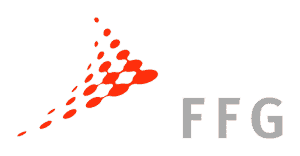UltimateGaN

PROJECT OBJECTIVES
Digitalisation and the underlying key technologies are an essential part of the answers to many of the daunting challenges that societies are facing today. The core enablers for this digital transformation are Electronic Components and Systems (ECS) used in applications, information highways and data centres. These information highways and data centres are the “backbone” of the entire digitalisation (5G) and electrical energy is the essential resource powering them. Due to the steadily increasing demand for data traffic, -storage and -processing, higher energy efficiency is inevitable. This is also true for energy conversion in terms of Smart Grids and Smart Mobility.
Whenever Silicon (Si) based semiconductor devices reach their limits, Gallium Nitride (GaN) based power semiconductors are promising candidates enabling much higher switching frequencies together with highest energy conversion efficiencies. Several FP7 and H2020 projects, among them the ECSEL pilot-line project “PowerBase”, have proven these assumptions and serve as the basis for the availability of the first generation of European GaN-devices. Besides proving the ability to achieve more efficient and more compact applications by the use of GaN devices, these projects made clearly evident, that the challenges of the GaN technologies have been heavily underestimated. This clearly results in the necessity to further investigate GaN and focus the research activities on size reduction, cost effectiveness and reliability while dealing with severe challenges:
- Higher electric fields (Drift phenomena impacting lifetime),
- Higher current densities (Electro-migration impacting lifetime),
- Higher power densities (Thermal issues limiting the compactness potential).
These challenges are forming a “red brick wall” for the next GaN on Si technology generations that hampers shrinking of GaN devices which is necessary to improve their affordability and thus increase the range of potential applications.
The RIA project proposal UltimateGaN will overcome the red brick wall and focus on the next generation GaN technology particularly addressing six major objectives along and across the entire vertical value chain of power and radio frequency (RF) electronics:
- Research on vertical power GaN processes and devices pushing performance beyond current state-of-the-art,
- Research on lateral GaN technologies and devices to achieve best in class power density and efficiency while optimizing cost vs. performance,
- Bringing GaN on Silicon RF performance close to GaN on Silicon Carbide thus enabling an affordable 5G rollout,
- Breaking the packaging limits – size, electrical and thermal constraints - for high performance GaN power products,
- Close the reliability and defect density gap for most innovative GaN devices,
- Demonstrate European leadership in high performance power electronics and RF application domains.
The first three objectives are GaN technology related meant to explore the limits by alternative device and process concepts. The fourth objective will address the fact that the outstanding semiconductor performance of GaN can only be harvested when assembly/packaging, interconnections and enhanced thermal management are optimized in a holistic approach. The packages, fully utilizing the unique performance of power GaN devices, are not ready today and therefore require further investigation.
Crystal defect formation, especially at the GaN on Si-interface, is one of the major obstacles toward yield and reliability levels of competing Si based technologies. Therefore, another main objective addressed by UltimateGaN is to prevent these defects in the next generation GaN on Si devices.
The research results coming from the technology and packaging objectives will be used and demonstrated in the course of the last objective dealing with demanding fields of applications for these high performance devices. Amongst many others these application areas are:
- Extremely efficient server power supply enabling lower energy consumption in data centres (5G: digitalisation backbone),
- Benchmark Photovoltaic inverters in terms of efficiency and size to foster the use of renewable energies (Smart Grids: energy backbone),
- Affordable 5G-Amplifiers up to mm-wave enabling a faster 5G rollout (5G: digitalisation backbone),
- GaN enabled ultra-fast switching LIDAR application to enable autonomous driving (Smart Mobility),
- Highest efficiency μ-Grid-converters and On-Board Chargers (Smart Grids; Smart Mobility).
The project UltimateGaN will enable highest efficiencies in the specific fields of the chosen applications and will lead to a significant reduction of the CO2 footprint of digitalisation, smart grids and smart mobility. To strengthen Europe’s role in the future of GaN business, significant effort must be spent to achieve affordable next generation GaN on Si transistors. As US and Asian companies are also heavily investing in this direction, it is of highest importance for Europe to speed up progress towards the next technology generations.
PROJECT FACTS
- Title: UltimateGaN - Research for GaN technologies, devices and applications to address the challenges of the future GaN roadmap.
- Programme: ECSEL JU (Electronic Component Systems for European Leadership Joint Undertaking)
- Funding institution: FFG (The Austrian Research Promotion Agency), EU
- Lead management: Infineon Technologies Austria AG
- Consortium: 26 partners from 9 nations
- Duration: 3 years (Mai 2019 – April 2022)
- Research volume CTR: € 906.048,-



Related links
Your contact person

DI Alfred Binder, MSc
Head of Research Division | Power Electronics
e-mail: contact@silicon-austria.com
Research program
The project UltimateGaN is funded within the European Union’s Programme ECSEL JU (Electronic Component Systems for European Leadership Joint Undertaking) and co-funded by FFG (The Austrian Research Promotion Agency).




